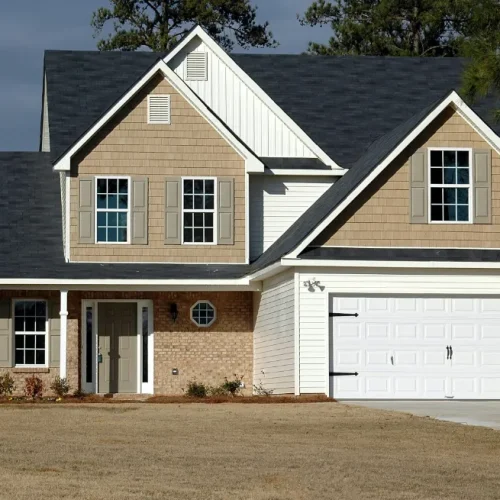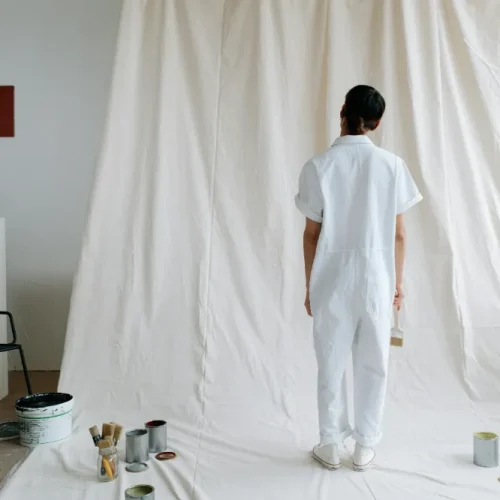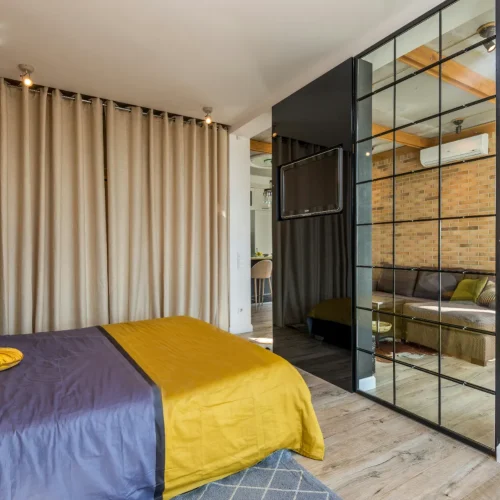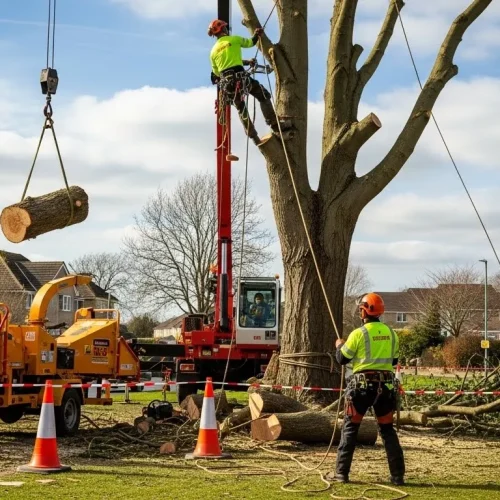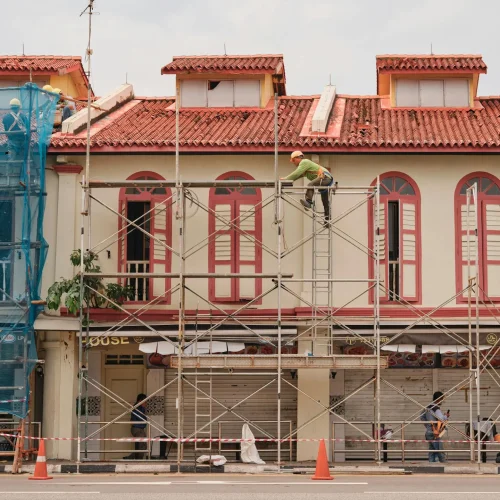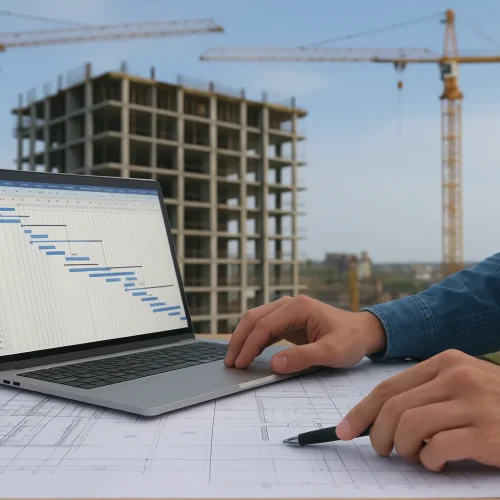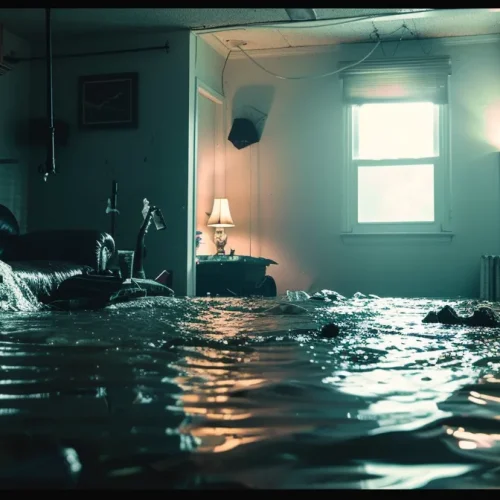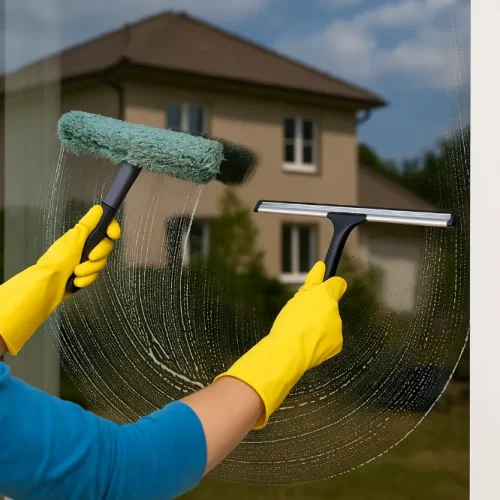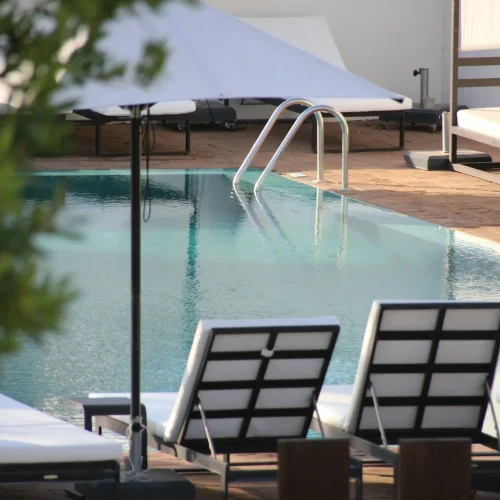
Turning an old property into a forever home takes patience, vision, and practical decision-making. The goal is to create a comfortable environment that supports daily life while adding lasting value. Every element, from design choices to structural improvements, matters when you want to make the space feel truly yours. Paying attention to details like water flow and protection can prevent long-term damage and help preserve quality. These considerations often determine how well the structure stands the test of time. With thoughtful planning and reliable workmanship, a once-dated house can evolve into a warm, welcoming residence built for lasting comfort and functionality.
Here’s how you can transform your home:
Begin with a Clear and Realistic Budget
Before beginning any work, start by setting a well-defined spending plan. List all priority areas and estimate costs for materials, labor, and permits. This keeps you from overspending and allows you to handle unexpected expenses more effectively. Include a small cushion in your budget for surprise issues like wiring or foundation fixes that might surface during the process. A realistic financial plan prevents unnecessary stress and keeps the project moving steadily. Planning this step early makes decision-making easier and ensures you can focus on both the quality and the longevity of your new living space.
Invest in Proper Gutter Installation for Long-Term Protection
Water damage is one of the most common causes of long-term structural issues. Proper drainage installation plays a key role in keeping your home protected. Installing seamless rain gutters can prevent leaks, foundation erosion, and wall damage by guiding rainwater efficiently away from your structure. Local providers like GutterPro can offer custom-fit systems that are designed to reduce blockages and eliminate unsightly seams that can lead to wear and tear. Their trained teams offer installations tailored to your residence’s layout, using durable materials that last for years. These gutters require minimal upkeep and add a sleek, clean appearance. Reliable water control solutions like this protect your investment and help preserve long-term durability.
Prioritize Structural Repairs Before Cosmetic Updates
Addressing major concerns before focusing on design details is vital. Issues like weakened foundations, leaks, or electrical faults can cause significant trouble later if ignored. Fixing these areas first makes everything that follows more secure and dependable. Once the base is strong, you can move ahead with flooring, paint, or lighting improvements confidently. This sequence also helps avoid having to redo completed work due to hidden structural faults. Taking care of the fundamentals early sets the groundwork for safety, durability, and peace of mind. It allows every visual and comfort-related enhancement to serve its purpose effectively.
Upgrade Doors and Windows for Better Insulation
Old doors and windows often let air escape, driving up energy costs and affecting comfort. Replacing them with insulated options helps regulate indoor temperature throughout the year. Look for energy-efficient materials that offer sound reduction and weather resistance. Double-pane glass and sturdy seals can make a noticeable difference in comfort. Along with functionality, these upgrades enhance the visual appeal of your residence. Well-fitted frames also add security and increase overall efficiency. This improvement not only makes your environment more pleasant but can also add to its long-term value while lowering utility expenses.
Modernize the Kitchen for Function and Flow
The kitchen is often the center of activity in any residence. Updating this area improves convenience and overall appeal. Consider open layouts that allow easy movement between cooking, dining, and social areas. Replace worn-out appliances with energy-saving ones and add thoughtful lighting that complements meal preparation. Cabinet design and countertop choices also make a difference in both style and practicality. Incorporating features like pull-out drawers or under-cabinet lighting enhances usability. Balancing aesthetics and comfort in this part of the project ensures that your kitchen remains both welcoming and efficient for years to come.
Refresh Bathrooms with Practical Upgrades
Bathrooms should feel comfortable and easy to use while supporting everyday needs. Updating tiles, flooring, and lighting gives them a cleaner look and makes upkeep easier. Adding efficient fixtures such as low-flow toilets or water-saving showerheads reduces consumption without sacrificing performance. Consider including storage solutions that keep things organized and clutter-free. Good ventilation prevents humidity-related damage, keeping the environment fresh. These small yet meaningful updates can completely change how this part of your home feels and functions, offering long-term comfort while contributing to the overall visual harmony of your renovation.
Refinish Flooring and Walls for a Polished Look
Fresh flooring and walls can instantly brighten up an older space. Restoring wooden floors, applying a new coat of paint, or using neutral tones helps create a cohesive atmosphere. These changes highlight other design elements while giving the entire structure a balanced appearance. When selecting materials, consider durability and ease of care. Consistent flooring throughout the main areas also gives a sense of flow and unity. Paint choices should complement your lighting setup and overall interior design. Together, these refinements give your home a refreshed, elegant feel that blends style and comfort.
Update Lighting and Electrical Systems
Lighting influences the comfort, safety, and personality of your living areas. Updating older electrical systems allows you to install more efficient lighting solutions. Consider recessed lighting, pendant fixtures, or layered arrangements to enhance brightness and mood. Check wiring conditions to avoid hazards and meet modern standards. Placing switches and outlets strategically adds convenience. Good lighting makes daily routines smoother while adding warmth and charm to the environment. Combining natural and artificial light can also make spaces appear more open and inviting. A thoughtful approach to illumination supports both energy efficiency and visual comfort.
Conclusion
Turning a fixer-upper into a forever home is about thoughtful choices and gradual progress. Starting with a clear plan, solid structural work, and reliable protection sets the foundation for long-term satisfaction. Small updates, from efficient gutters to cozy interiors, combine to create lasting comfort. Each stage matters in shaping a home that fits your needs and style. With careful decisions, you can create a welcoming space that not only looks inviting but feels complete in every sense. A place built to last and reflect your personal touch for years to come.
FAQS
Start with structural repairs, like foundation and roof work, before moving on to design updates.
List essential projects, research material and labor costs, and add a 10–15% cushion for unexpected expenses.
Proper gutters prevent water damage, foundation erosion, and costly long-term repairs.
Install insulated windows, LED lighting, and Energy Star appliances to lower utility bills.
Opt for open layouts, smart storage, and modern appliances for better flow and usability.
They improve insulation, enhance security, and help maintain comfortable indoor temperatures.
Focus on water-efficient fixtures, better lighting, and improved ventilation to refresh the space.
Refinish if the base material is solid; replace only if it’s damaged or outdated beyond repair.
It ensures safety, supports modern appliances, and allows for more efficient lighting options.
Depending on size and scope, it can take anywhere from a few months to a year to complete.


